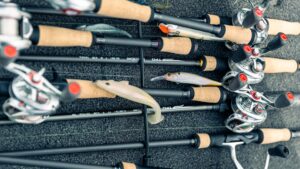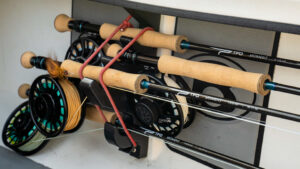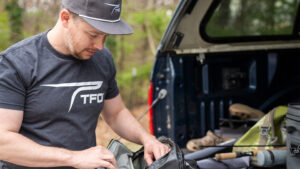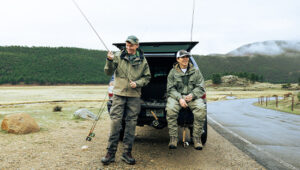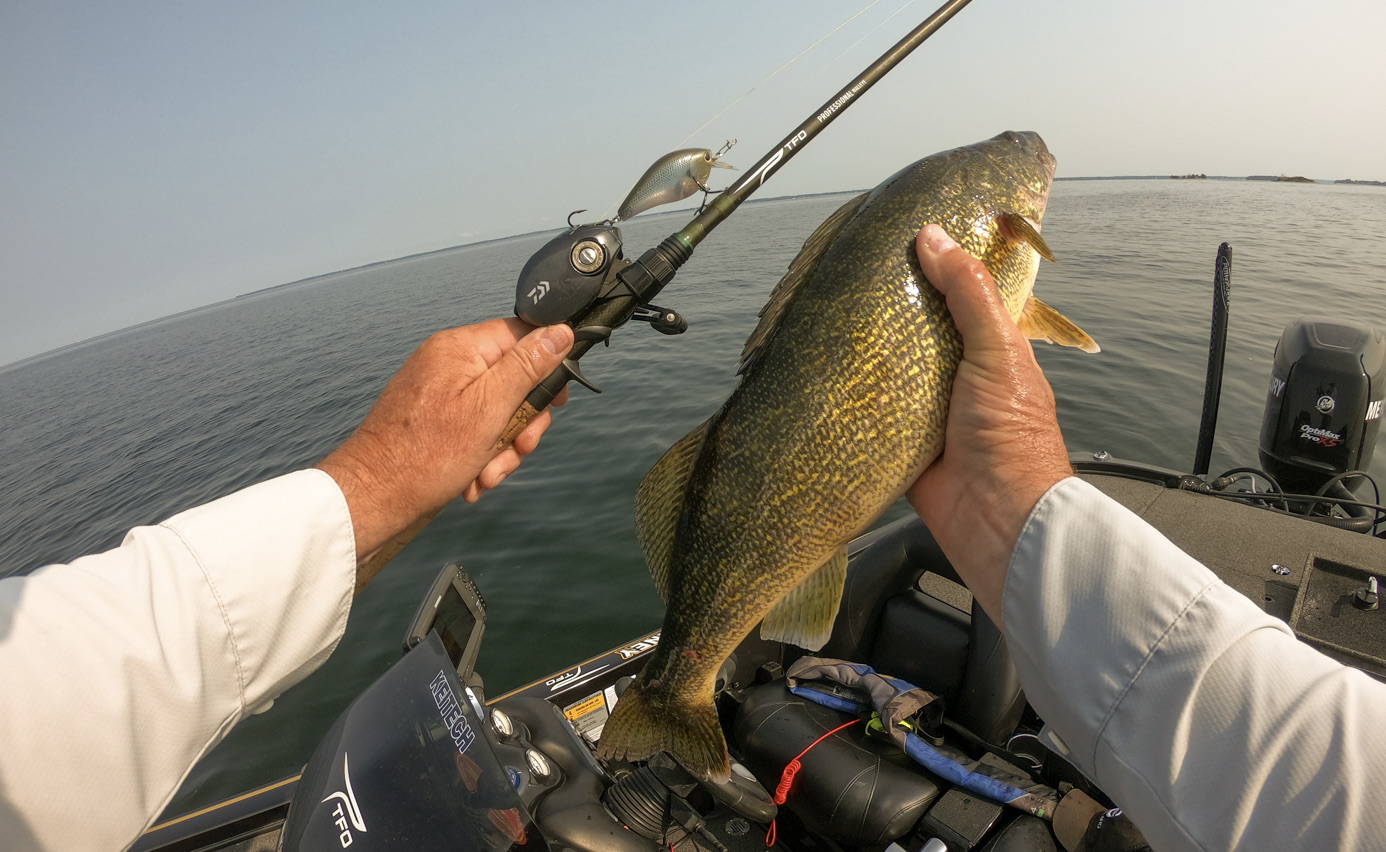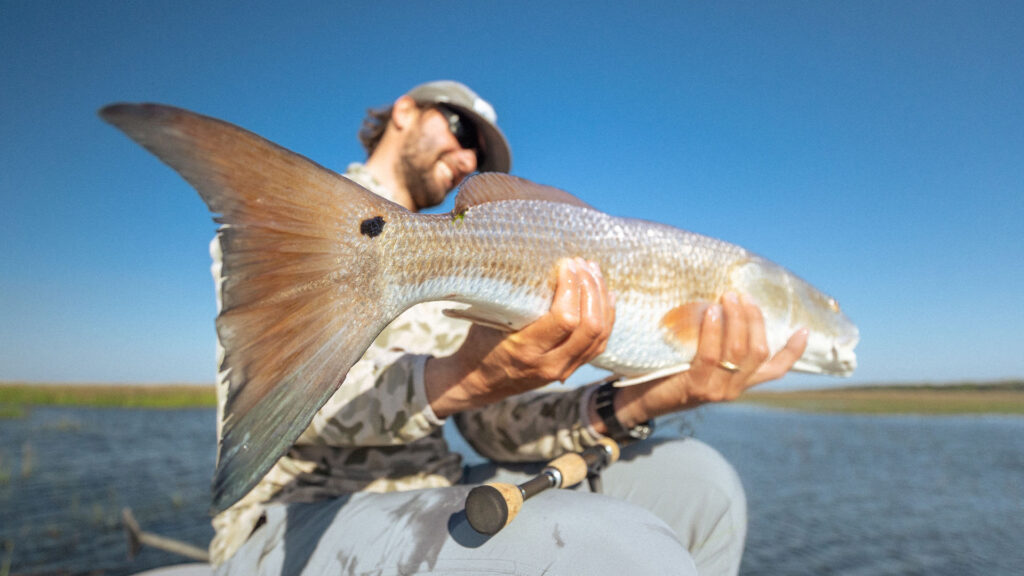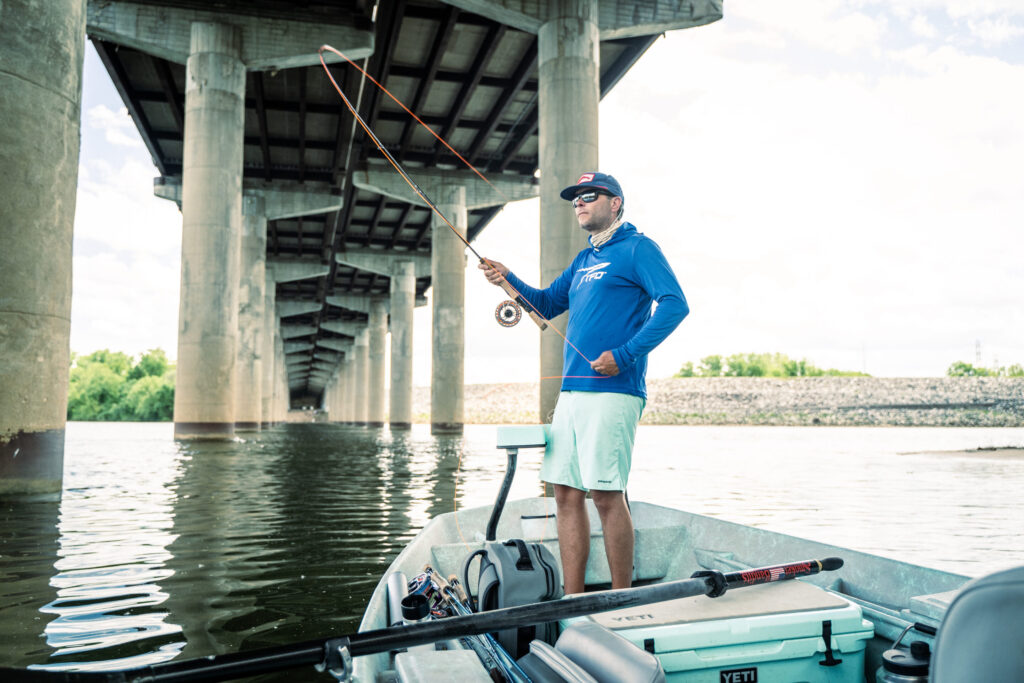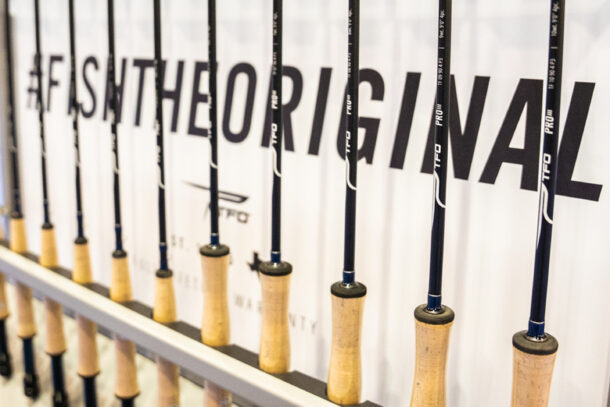As we transition toward the end of summer and into the early fall season, casting for big water walleye that roam the Eastern Basin of Lake Ontario is something I encourage all walleye anglers to explore. This style of fishing is oftentimes over shadowed by the great trolling opportunities the fishery provides, yet when armed with the right equipment, this style of fishing is one of the most exciting ways to catch big water walleye.
Equipment
I use TFO’s Professional Walleye rods, PRO WC 764-1, 7’6″, Moderate power, fast action, rated for 6-12 lb. test and ¼ – ¾ oz. lures. I pair this rod with a Daiwa Tatula 6.3:1 reel spooled with either 10 or 15 lb. Cortland Masterbraid braid, and on the business end I tie directly to a size 10 snap swivel and to that I attach a 5/8 oz. Walleye Wonder weight forward in-line spinner dressed with a 4- or 6-inch Zoom Trick Worm (green pumpkin w/chartreuse tail). The weight forward spinner comes with a size 3 gold Aberdeen hook, I replace that with a size 3/0 Trokar or Gamakatsu flipping hook, both hooks have bait keepers bonded on the hook shank which hold the trick worm in place on repeated casts and they provide excellent hooking properties.
A lot of folks ask me why the Zoom Trick worm instead of a natural night crawler. To that I say, “Why not?!” In my assessment, the walleye sees the flash, they close in on the lure to get a closer look, then feel the thump of the rotating blade and ultimately the last thing they’ll do is bite it to see exactly what it is. When you look at a natural night crawler rigged on the back of a weight forward in-line spinner the worm is usually stretched out straight behind the blade as it comes through the water, the Zoom Trick worm looks much the same. The biggest difference is I can usually catch four or more walleye on the same Zoom Trick Worm before I need to replace it and I’m not worried about getting bait and keeping it fresh until it’s time to fish again.
The other lure that’s proven very productive over the past six years is the 2.5 squarebill. There are countless models available, but I prefer the Lucky Craft brand. These baits run true right out of the package and the 2.5 size does a fantastic job of matching the hatch regarding perch and panfish the walleye prefer.
What To Look For
I concentrate my efforts on main lake shoals and the offshore shoals in the back bay areas. The better shoals top out at 7-12 foot dropping off into the main basin and they need to have a decent mix of cobble rock and weed (preferably coontail or milfoil) find some eel grass mixed in and it’s even better. In my experience, the cleaner the weeds are the best. Whenever I find an area with green slimly algae bloom smothering the primary weeds, I move on to the next area.
What I’ve found is the clean weeds play host to the grass shrimp, which draw in the panfish and perch and once they congregate on the weeds the walleye aren’t too far behind. The other factor that seems to help (at least in the Eastern Basin on Lake Ontario) is the start of the fall salmon migration. This salmon migration seems to trigger the walleye to vacate their open water feeding on alewives and move to shallower areas in search of the perch and these shoals are the first feeding areas they intercept as the move out of the deep open water.
Presentation
What works best for me is a steady retrieve. I’ll cast these lures out adjacent to the shoals along the weed edge and depending on depth (at least 6-7 ft. of open water above the weeds), I’ll sometimes present the lure across the very top of the shoal.
I have my best success casting adjacent to the shoals along the outside weed edges. Key to my success in these areas is making long casts, and the properties of the TFO Professional Walleye 7’6” rods make easy work of getting the lure well away from the boat.
I’m oftentimes asked about using a leader on the end of the Masterbraid. In my experience, when fishing the weight forward in-line spinner there seems to be no difference in using a leader- Vs- tying the masterbraid direct. I’ve had days where a fluorocarbon leader in front of the 2.5 squarebill resulted in more strikes/hook-ups. I usually tie in a 36-40” section of Cortland’s Top Secret Fluorocarbon when I’m casting the 2.5 squarebill.
When selecting which lure to use, I generally start with the 2.5 squarebill and once I’ve caught a few fish on it, I’ll go back through the same area with the in-line weight forward spinner and pick off another fish or two. I’ve also had days where it didn’t matter which lure you cast first, but I just have great confidence in the 2.5 squarebill therefore I usually start with it.
Once an area slows, I move on to the next shoal. When walleye feed on or near the shoals, you’ll usually hit a two or more fish on your first pass through the area. When that occurs, make another pass through to see who else is willing to bite. The other thing to remember is this, if conditions allow, make repeated casts to the same general area where you hooked the very first fish. Oftentimes these fish feed in groups and odds are the one you just caught has some buddies with him.
When casting the weight forward in-line spinner I’ve had days where the walleye will just nip the chartreuse tip off the tail of the worm and to remedy the bite offs, I borrowed a trick for the jig fisherman and put on a 3” stinger hook. This can turn those light biters or bites off into solid hook ups. I initially started with the stinger hooks from Northland Tackle, but found those hooks are a fine wire hook and can be flexed open by a good-sized walleye. I started making my own using a size 6 Gamakatsu round bend treble hook tied with Masterbraid, so far it’s working great.
Using the 2.5 squarebill is a simple presentation – cast it out and begin a steady retrieve. I’ve found these crankbaits dive around 5-7 ft. depending on the speed of retrieve and the diameter of line you use. I prefer Masterbraid for both applications (the 2.5 and weight forward in-line spinner) for two reasons: 1) It allows me to make super long casts in the gin clear waters of Lake Ontario and 2) The no stretch line provides excellent long distance hook sets. Remember all braids are no-stretch lines, therefore you want to allow a bit of slippage on your drag setting and trust the moderate power of the TFO Professional Walleye 7’6” rod.
Pro Tip: When you initially feel a tap on the lure do not set the hook, instead continue with the steady retrieve, and wait until you feel the weight of the fish to perform a moderate sweeping hookset raising the rod from the 9 to the 12 O’clock position. By waiting until you feel the weight of the fish, it allows the walleye to take the entire bait in its mouth and usually results in better strike to hook up ratios.
What you’ve just read has consistently produced late summer early fall walleye for me on the Eastern Basin of Lake Ontario since 2015 and if you can find the similar conditions on the Great Lake nearest you it ought to produce there as well.
Good luck to you, harvest what you can reasonably eat, and release the rest to fight another day!
About the Author
Burnie Haney is a Licensed U.S. Coast Guard Captain owner & operator of New York Fishing Adventures based out of Henderson Harbor NY on Lake Ontario. He’s a member of the Jefferson County Sports Fishery Advisory Board to the New York Department of Environmental Conservation (NY DEC) Region 6 Fisheries Chief and he serves as the Jefferson County Sportsman’s Representative to the NY DEC Region 6 Fish and Wildlife Management Board. Haney holds two International Game Fish Association (IGFA) New York State line class records (smallmouth bass and walleye) and the IGFA All-Tackle Length World Record for Chain Pickerel. You can find out more about Burnie here.
![]()
